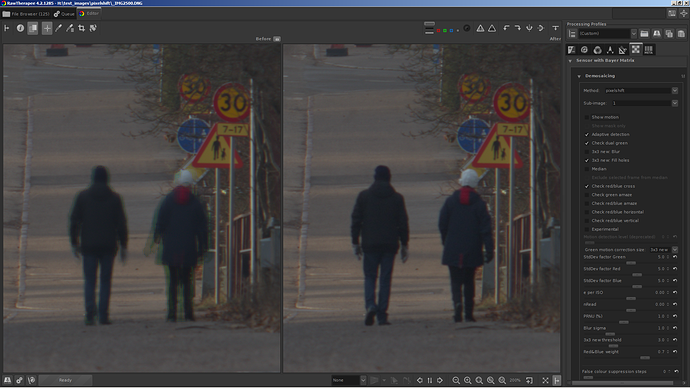What I did find out is that RT does convert my D7200 raws nicely, as well as LR6 does (and Affinity Photo doesn't but that's another thread). But it took me forever to go through all the controls to attempt to get a typical nef to look like what takes me seconds to do in LR6 (of course, after a lot of experience).
So who is Raw Therapee for? Before I spend a ton of time trying to get it to emulate the way I use LR6, will I eventually find that it can or is RT really for one-off difficult raws and in that sense is "better" than LR6?
If RT emulated the way LR works, and if the results were the same, what would be the point?
I believe people use RT because they like the way RT works, and they like the fact that they can achieve better results in RT, not results that match LR. Of course, "better" is subjective, so "better" exists only in the mind of the beholder.
If everybody thought RT was better than LR, then LR wouldn't be as successful as it is. But if everybody thought LR was better then RT wouldn't have as many satisfied users.
From my own perspective, I like DxO OP better than either LR or RT, so that's what I stick with. I don't spend any time trying to make DxO OP work more like one of the other programs, or to produce output that matches one of the other programs. In my opinion, to do that would be counter-productive.
So I guess my question to you is: Why are you pondering RT instead of sticking with what you seem to like very much?
1. It's great you love and use DxO. I have the latest DxO but don't use it because it doesn't do what I want it to do. It does what you want and need. Great, keep using it.
2. "If RT emulated the way LR works, and if the results were the same, what would be the point?" What a specious statement. You use DxO. How would you know whether RT does things better than LR?
3. My question to you is: why do you care if I ask questions here about RT to see if it can fit into the way I go about my post processing? For all I know it could indeed do the things that I love about LR6 better and would indeed be a worthwhile addition to my workflow. If I listened to you I wouldn't even bother finding out.
First, I didn't say that RT was better than LR. I said some users think RT is better, and some think that LR is better, and also that "better" is in the mind of the beholder. I don't know how i could have been more clear.
Second, you started your post by saying that you tried RT and found it harder to achieve the results you were looking for. Results you already get from LR.
So if your question is whether you should be using RT or LR, I believe you answered your own question at the very beginning.
That said, your subject line didn't ask that question. It was asking who was RT for? Coupling your subject line with the rest of your post, you seemed to be asking why anybody would choose RT over LR. In my reply I was simply saying that users of both programs were finding what they were looking for.
In no place did I advocate for DxO OP. I was simply disclosing my own choice, instead of hiding behind anonymity. Full disclosure is usually considered desirable. I didn't realize that you only wanted to hear from a limited group. However, I've tried both LR and RT, and most of the others, and DxO was simply my top choice.
In the second paragraph that I quoted, you are posing a binary choice. Namely, will you ever be able to make RT emulate LR, or is it only for special cases? I was just trying to point out that the choice doesn't have to be limited to either-or. Many people use RT specifically because it isn't exactly like LR, and they apparently prefer that. Which I thought was what your subject line was asking.
In your item 3, you ask why I care what you use. The simple answer is that I don't care one bit. But your original post did pose questions, and i have a question for you. Why ask questions in a public forum and then later ask why somebody took the time to try to answer them?
Nobody says you have to agree with all answers, but asking a person why they care seems to be a bit over the top, especially when they don't actually care at all.
Maybe this reply has further muddied the issue, but my hope is to add clarity.


